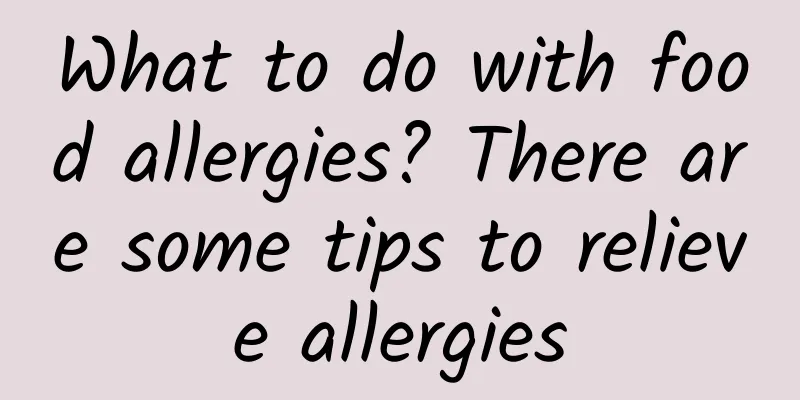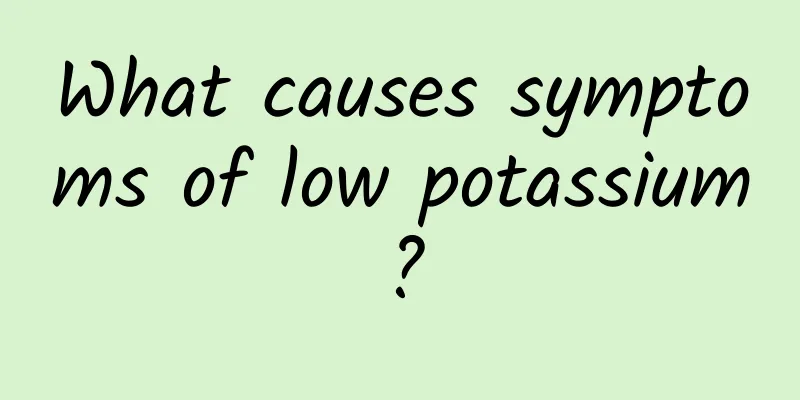What to do with food allergies? There are some tips to relieve allergies

|
In life, many people will have allergic reactions after eating certain foods, such as seafood, milk, nuts, etc. If an allergic reaction occurs, the patient will have red bumps on the body, accompanied by symptoms such as itching. How can food allergies be treated? 1: What to do if you have food allergies1: Once you feel the signs of food allergy, don't panic. Write down everything you eat today and do this for 3 consecutive days. Then, from the foods you eat most often, choose the most suspicious allergy food, which is usually one of the foods that are most likely to cause allergies mentioned above. 2: Do not allow the child to eat the suspected allergenic food for two consecutive weeks. If you don't notice any changes, try the next suspected food until you have tried every food you think might be causing the allergy. You can also take it to the hospital for an allergen test to find out the foods that may cause allergies. Based on the test results, intolerant foods are divided into categories such as fasting, food replacement, and reduced consumption to control the source of the disease, and experts then develop targeted scientific recipes. 2. Treatment of food allergies1: Avoid therapy. That is, completely avoid consuming foods containing allergens. This is the most effective way to prevent food allergies. That is to say, after the allergen has been clearly identified through clinical diagnosis or based on medical history, the intake of this allergen food should be completely avoided again. For example, people who are allergic to milk should avoid eating all foods containing milk, such as ice cream, cakes, etc. that have added milk ingredients. 2: Processing of food. Through deep processing of food, the content of allergens in food can be removed, destroyed or reduced. For example, allergens in raw food can be destroyed by heating, or the physical and chemical properties and material composition of food can be improved by adding certain ingredients, thereby achieving the purpose of removing allergens. In this regard, the easiest and most common thing to understand is yogurt. Lactic acid bacteria is added to milk to break down the lactose in it, making it no longer a contraindication for people who are allergic to lactose. 3: Alternative therapy. Simply put, it means eliminating foods that contain allergens and replacing them with foods that do not contain allergens. For example, people who are allergic to milk can use goat milk, soy milk, etc. instead. 4: Desensitization therapy. Desensitization therapy is mainly aimed at foods that have high nutritional value and that certain susceptible people want or need to eat frequently. In this case, desensitization therapy can be used. The specific steps are: first dilute the food containing allergens 1000 to 10000 times, and then eat one portion, that is, first eat one thousandth or one ten thousandth of the food containing allergens. If no symptoms occur, the amount consumed can be increased day by day or week by week. 3. Frequent allergic reactionsFriends, you should try to stay away from foods that may cause allergies in your life. |
<<: What to do if your baby has indigestion and vomiting? How to deal with your baby's vomiting
>>: How to deal with gray hair caused by kidney deficiency? A few tips to say goodbye to gray hair
Recommend
What will happen if people don’t eat oil for a long time?
In daily life, everyone is advocating a diet with...
What medicine is effective for migraine?
We all know about migraine. This disease is very ...
The nursing measures for pneumothorax can be understood from three aspects
Pneumothorax is a serious disease that occurs in ...
What are the symptoms of encephalitis in babies?
If a baby has encephalitis, the harm is relativel...
Can garlic cure psoriasis?
Garlic is a folk remedy for treating psoriasis. W...
Avascular necrosis of talus
Some people may suffer accidental injuries, espec...
Understand the real reason why cupping causes blisters
Introduction: Weight loss has become a topic of g...
Observe the sublingual collaterals to understand the flow of qi and blood, and the clinical application of the sublingual collaterals
There is a most convenient "window" tha...
What are the symptoms of Qi deficiency and excessive fire? What should I do if I have qi deficiency and excessive fire?
Qi deficiency and excessive fire is a common mani...
Can I swim if I have gastritis?
Gastritis is a common inflammatory disease that a...
What are the effects and functions of honey loquat leaves
There are many names for honey loquat leaves, suc...
Prevention, diagnosis and treatment of infiltrative pulmonary tuberculosis
Infiltrative pulmonary tuberculosis is a type of ...
Why is my forehead dry, itchy and peeling?
If the forehead always has symptoms of peeling, d...
My baby's hand is swollen, what's going on?
Redness and swelling in people's bodies must ...
Low neutrophil count in blood test
If the neutrophil count in a routine blood test i...









